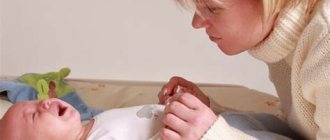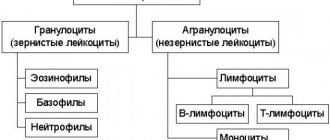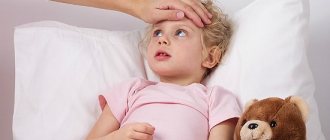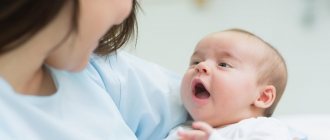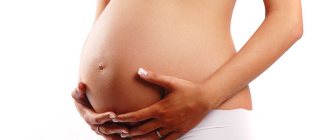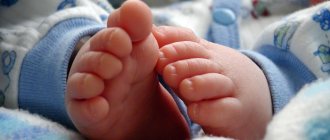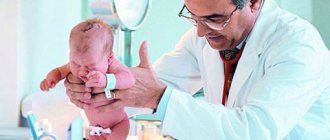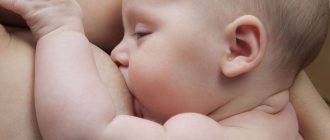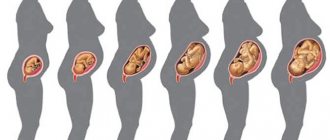According to doctors, diagnosis of hearing impairment should be carried out as early as possible, so audiological screening is an important examination of newborns. Thanks to the inclusion of such screening in the list of mandatory diagnostic methods, even children with significant hearing loss have a chance to develop, hear and speak normally. Let's take a closer look at what audio screening is, what its features are, when an audio test is performed in the maternity hospital, and why screening is repeated at 3 months.
You can suspect that a baby has hearing problems by his reaction to sounds. Normally, a newborn reacts to loud sounds by reflexively rocking, squeezing his eyelids, or spreading his arms to the sides.
Already in the second week of life, the baby begins to focus on the sounds he hears, and by the end of the 1st month of life, the rudiments of an indicative reaction to sound appear in the form of attenuation.
At the 2nd month, the baby begins to listen to sounds and respond to them, and then learns to walk.
If hearing is seriously impaired, it will be noticeable at these stages of development. However, in the case of minor impairments or one-sided pathology, the mother may not notice that the baby has difficulty hearing.
An audiological examination, carried out as early as possible, helps to identify even mild disorders and correct them, which prevents problems with speech and socialization in the child in the future. The name of the survey is derived from the Latin word “audio,” meaning “hearing.”
Doctors say that prosthetics using hearing aids in infants up to six months of age allows babies to ensure normal hearing development at the level of healthy children .
Mastering their native language, accumulating passive and active vocabulary, understanding grammatical structures and other features of speech development in such children occur at a normal pace, which cannot be said about toddlers who were diagnosed at the age of 6–12 months or later.
To detect hearing loss as early as possible and ensure timely rehabilitation, doctors conduct a test called neonatal audiological screening .
In Russia, such screening is used to diagnose hearing problems in children at risk according to Order 108, which has been in force since 1996, but since 2008, screening began to be carried out on all newborns.
There are two stages of audiological screening . At the first stage, the condition of the receptor apparatus of the baby’s inner ear is assessed in order to refer the little patient for further, more in-depth examination, which is already referred to as the second stage of diagnosis.
The examinations are non-invasive and safe. They are inexpensive, highly sensitive, do not take much time and are quite easy to use. For accurate objective diagnosis at the first stage of screening, a method has been developed, which is denoted by the abbreviation OAE.
These letters stand for “otoacoustic emission.”
Experts estimate the sensitivity of this method at 90%, and specificity at 93–95%. Screening using OAE may not show that a child has auditory neuropathy, which is detected using another, more accurate and sensitive method - recording auditory potentials.
However, it still detects most cases of hearing problems.
The OAE method is used for all newborns. Typically, such screening is carried out in the maternity hospital on the 3-4th day of the baby’s life. It is performed by a neonatologist or an experienced nurse. If for some reason the examination was not carried out in the maternity hospital, it should be done for the baby in the children's clinic to which the newborn is attached. In this case, the screening is done by a pediatrician, ENT doctor or nurse.
To register otoacoustic emissions, an audiometer - a special mobile device that has a probe with a highly sensitive microphone.
An earmold is placed over the probe before use, making the probe look like a regular earphone. Next, the probe is hermetically inserted into the baby's external auditory canal.
After checking one ear, the manipulation is repeated for the second.
The equipment affects the hair cells that are located in the inner ear. The function of these cells is to capture and amplify sound vibrations. In addition, they are able to “respond” to sound waves with their own vibrations. It is the appearance of such vibrations, which are generated by hair cells, that is called otoacoustic emission.
The device sends a sound impulse to the inner ear and literally a moment later receives a response signal created by the hair cells, after which information about the results is displayed on the screen.
For many devices, if the result is positive, the word pass is displayed, which indicates that the impulse has been accepted and the child has passed the test.
If the result is questionable or negative, the word refer will appear on the screen. It means that the test requires clarification, that is, it is too early to panic and to exclude hearing loss, the test should be repeated at least one more time.
A child cannot be immediately diagnosed using the OAE method alone.
The screening results are included in the newborn’s discharge document if the test was carried out in a maternity hospital, or in the medical record if the hearing was checked in a children’s clinic. Most often, the record is represented by a plus sign indicating each ear.
The right one is marked with the letter D, and the left one with the letter S. The result may look like D (+); S (+). It is also often written in this form: D = S (+). If there is no reaction of the cells of the inner ear to the stimulus, a (-) is marked instead of a plus sign.
To ensure accuracy and correct results, it is important to consider the following important nuances:
- the study should be carried out in complete silence; The duration of the procedure is 5–15 minutes;
- It is recommended to check your hearing between feedings; the newborn should be calm, it is best for him to sleep;
- The baby should not be allowed to suck on a pacifier during the examination, even if it calms him; sucking may skew the results.
If the newborn has passed the test, then the UAE will no longer be determined during the first year.
If the result is negative, the examination is repeated at the 4th week of life (or a little later, but up to 3 months) in a children's clinic, observing all the conditions that are provided for the first screening.
If the second test also gives a negative result, the child is sent to an audiology office or center, where he will undergo the second stage of screening.
It involves examining the eardrum and outer ear, interviewing parents and several additional tests, on the basis of which an accurate diagnosis can be made. Examinations at this stage include impedance measurements , recording of auditory evoked potentials, acoustic reflexometry, and pure-tone audiometry.
Particular attention is paid to children from risk groups, for example, when a hereditary pathology is suspected, when, if the parents have hearing impairment, the problem is often detected in the newborn.
The risks are also increased in situations where during pregnancy a woman had a viral or bacterial disease, or the expectant mother smoked or drank alcohol.
In addition, hearing impairment in infants can be caused by certain medications that the pregnant woman took both in the early and late stages.
Among the dangerous drugs , Gentamicin, Kanamycin, Amikacin, and Furadonin , the use of which often leads to deafness.
As a result of a complete examination, the doctor determines the type of hearing loss and its degree. Next, information is provided for selecting a hearing aid, and the possibility of installing a cochlear implant is assessed.
Additionally, specialists develop a detailed plan for how the child’s hearing and speech will be corrected in the first years of life. Parental consultations, including psychological ones, are required.
Babies born much earlier than expected are characterized by physiological immaturity, so audiological screening for them is indicated at a different time than for full-term toddlers.
If the baby was born at 33-37 weeks of gestation, then the examination is carried out in the first or second week of life. If the gestational age during which labor began was less than 32 weeks, then the hearing test is postponed to 2–6 weeks after birth.
If the result is negative, repeated screening is carried out in a children's clinic at 3 months, and if necessary, additionally at 6 and 12 months.
Note that the time for audiological testing is shifted not only for premature babies, but also for some other problems.
For example, if a baby was admitted to intensive care immediately after birth or had to undergo surgery to correct a serious defect, then the examination will be performed as soon as the child’s condition is stable.
Audio screening is also performed later for low birth weight babies, newborns with infection or severe postpartum jaundice. The timing for each of these children is determined individually.
What is audiological screening of newborns, see below.
Why is an audiological examination done?
In the first year, a child learns to understand different sound signals and speech addressed to him. A child with hearing loss will have difficulty perceiving sounds and may have problems understanding and producing continuous speech.
Statistics show that only 0.1% of newborns are diagnosed with profound hearing loss. With the help of the latest medical technologies, audiology specialists identify children with hearing impairments at the earliest stages and can provide them with effective assistance.
Studies have shown that infants under the age of 6 months, with stage 3-4 hearing loss, who were promptly prescribed correction with hearing aids, were no different in their development from their peers with normal hearing. They developed their language and speech, vocabulary, and mastered the construction of a grammatical basis at a normal pace. If hearing aids begin to be used after 9 months of age, audiological and pedagogical correction may be less effective. Therefore, it is especially important that audiological testing in newborns be performed in a timely manner.
Age-related characteristics of hearing testing in children
The determining factor in the problem of rehabilitation of children with impaired hearing is the time of beginning work with a hard of hearing or deaf child. Correct assessment of the state of auditory function is of particular importance in young children, since timely diagnosis makes it possible to begin their rehabilitation and placement of the child in a speech environment as early as possible [14]. The formation of the auditory analyzer occurs at 5–7 weeks of intrauterine life. Starting from the 20th week of pregnancy, the fetus distinguishes the frequency and intensity of sound, and thus by this time the auditory analyzer is already fully formed. In normal hearing children, during the first and second years of life, important processes occur in the physiological maturation of the auditory pathway, which are a prerequisite for the development of normal auditory perception and auditory processing [5,6]. Newborn babies initially respond only to very loud sound events. Up to 5 months of age, a child does not always give an immediate response to loud speech if it comes from outside his field of vision. It may also be that the child reacts to an auditory event only once or twice, and later will not respond to the same auditory event. First, the child will begin to perceive and discover that there is an acoustic environment, and then he will increasingly pay attention to auditory impressions. He may become quiet for a short time, stop moving and listen. It makes a distinction between the perception of sound and silence. From 3 months of age, a child can already perceive weaker sound stimulation to a large extent. The voices of parents are of particular importance at this stage. At this early stage, a normally hearing child also does not know that sounds and noises have meaning. From about 6 months of age, a normally hearing child is able to turn towards the source of sound. He begins to look for the source of noise and sound. The ability to localize sounds is important for spatial auditory perception and forms one of the main stages in the auditory development of a child [11]. From 6 months of age, the child’s answers become more clear and intelligible. He shows interest in music. The child discovers his own voice, and at 9 months of age he can already distinguish the voices of people close to him. It recognizes the various noises and sounds of everyday life and responds to them accordingly. It recognizes the prosodic features of language, such as length and brevity, pitch, different volumes, rhythm and stress. He listens if someone speaks to him [2,4,9]. The next stage of development is the ability to distinguish between the equality and difference of two or more linguistic utterances, i.e. the child must learn to take into account the sequence of linguistic utterances. At this stage, the development of auditory perception is closely related to the development of language and speech. The child acquires the ability to repeat the name of objects, point to the named object, and carry out instructions. It can recognize and distinguish speech sounds, identify words with different numbers of syllables, as well as words with the same vowels but different consonants, and vice versa. He understands the instructions and requests of daily use, expressions often used in his family, simple tasks and questions. Understanding of speech through the ear is manifested, for example, in his answers to questions, especially if the child uses wording different from the wording of the question when answering. The child wants to be told or read fairy tales and stories, and understands them. He points to objects in the picture book when mommy names them. He can carry out increasingly complex tasks and becomes an increasingly competent interlocutor. His understanding of speech that is not directed directly at him increases (for example, when his parents talk on the phone) [4]. Modern development of technology and the creation of appropriate diagnostic equipment make it possible to detect hearing impairment at any age, even in newborns. In the literature there are reports by foreign authors on intrauterine hearing testing of the fetus. A wide range of modern methods for studying auditory function allows for a complete qualitative and quantitative assessment of the state of the auditory analyzer, while the possibility and feasibility of using one or another method directly depends on the age, level of development, character of the child, as well as on whether the audiologist managed to establish an agreement with the child contact. A feature of pediatric audiology is the difficulty of diagnosing hearing impairment, due to the different levels of psychomotor development of the examined patients and often the absence of complaints about hearing loss (in particular, the child’s parents may not be aware of the presence of unilateral damage to auditory function and even the absence of hearing on one side for many years, so how normal speech is formed due to the functioning of the ear). In addition, the ability for sustained attention and cooperation in children is significantly limited compared to adults. Children get tired faster than adults and lose interest more quickly during hearing testing. Therefore, if a child does not respond to sounds, this does not always mean that he cannot hear. Therefore, it is especially important to organize the framework conditions for conducting audiometry so that it is successful even under aggravated circumstances. This means, for example, flexible handling of the rhythm of children's waking and sleeping phases. With the help of appropriate pedagogical know-how, it is possible to achieve such motivation in infants and young children that, at least for a short time, attention and concentration for auditory perception are achieved. Children must learn to measure auditory perception, which means that an accurate determination of the hearing threshold can only in the most rare cases be carried out within a single measurement; most often, this requires repeated measurements [8,9]. Both the measurement itself and the processing of the data obtained require accurate information regarding the mental and physical development of the child, in addition, deep knowledge of the development of auditory function. In the first years of a child’s life, the auditory function constantly develops further, therefore, when processing the results of audiometric data, it is imperative to take into account the age-related characteristics of auditory reactions. Thus, the threshold for reaction to stimulation in a newborn is about 80 dB in the open sound field (OSF), from 3 months – about 60 dB in the OSF, from 6 months – about 40–50 dB in the OSF, at 1 year – about 30–40 dB in OZP and from 3 years - about 20 dB in air conductivity. The threshold of hearing and, accordingly, the threshold of reaction of an adult is reached by a child only at the age of 6 [1]. From the point of view of the need for conscious participation in the process of examining the child himself, all methods for studying auditory function are divided into two groups: subjective and objective. This division is conditional. Accordingly, studies using objective methods do not require active participation in the examination process of the patient himself and can be carried out while asleep or under anesthesia. Subjective research methods are based on a verbal, motor or behavioral response to a testing sound stimulus. These include pure tone threshold audiometry, speech audiometry, tuning fork testing, and ultrasound lateralization testing. Objective ones include acoustic impedance measurement, registration of various classes of otoacoustic emissions (OAE) and auditory evoked potentials (AEP). In order to systematize ideas about the modern capabilities of pediatric audiology, we will designate certain age periods in children: the first period of newborns, the second period - from 2-3 months to 2-3 years, the third - from 2-3 years to 5-6 and the fourth - from 5–6 years to 15 years. It is necessary to make a reservation that this division is also very arbitrary, since the age range for the use of some methods directly depends on the level of psychomotor development of the child. So, it has been established that the study of auditory function can be carried out even in the prenatal period, since the fetus responds to acoustic stimulation by increasing motor activity. Such studies have been conducted, but have not been widely used in practice. The next age period is the neonatal period and early infancy. A large number of works by both domestic and foreign authors are devoted to the study of hearing in newborns. To assess the hearing ability of a newborn, it has been proposed to observe the child's various reactions to acoustic stimulation. To do this, various reflexes can be evoked, observed and recorded through acoustic stimulation: • Moro reflex (a shaking movement of the arms and legs, the child stretches out the arms and legs, and then pulls them back towards the body); • cochleopalpebral reflex (squeezing of the eyelids with closed eyes or rapid closing of the eyelids with open eyes); • respiratory reflex (a deep breath is followed by a 5-10 second breath hold, after which breathing returns to normal); • stapedius muscle reflex. The unconditioned reflexes of newborns fade away at approximately 3–5 months of age. At the same time, the first indicative reactions begin to develop. Behavioral and observational audiometry is about obtaining reproductive responses to acoustic signals in the form of behavioral changes. Reactions can be different: • changes in facial expressions, • turning or moving the head, • movement of the eyes or eyebrows, • sucking activity - freezing or increased sucking, • changes in breathing, • movement of the arms and/or legs. To interpret the results obtained in this way, a specialist must have extensive experience. Behavioral and observational audiometry are also inconclusive [2]. The hearing curve obtained in this way represents rather a response threshold, since children at this early age cannot yet signal when exactly they heard a sound. As a rule, they only show a reaction if they perceive the sound to be somewhat louder and clearer. If the answer is yes, this does not mean that the child has normal hearing. If there is no answer or it comes with a significant delay, this also does not indicate that there is a hearing impairment. Therefore, at this age, reactions to acoustic stimulation alone, obtained on the basis of reflex and behavioral-observational audiometry, are not enough either for the selection of hearing aids or for determining the need for cochlear implantation [2]. In order for these data to be considered truly objective, at this early phase it is necessary to draw on data obtained through systematic observation in various situations. At the present stage, the possibilities for studying the auditory function of a newborn child have expanded significantly, primarily due to the introduction of objective methods into clinical practice. When examining a child in the neonatal period, we are faced with two tasks: a screening study of auditory function in all children and a detailed examination when identifying hearing impairments in a child. When conducting newborn screening, the following requirements must be taken into account: the technique must be non-invasive, highly sensitive, highly specific, short-term and easy to perform. The ideal method in light of the above requirements is the UAE registration method. This is due to the fact that in children in the first month of life, the OAE has particularly high amplitudes (more than 10 dB higher than in adults) and due to this, the study is simpler and more reliable. In addition to the small volume of the external auditory canal and the resulting higher sound pressure, the immaturity of the inner ear is also responsible for high amplitudes in newborns. This may be due to the insufficiently mature control function of the efferent fibers of the cochlea. Emission in newborns covers in the form of a band, as a rule, all frequencies from 1000 to 5000 Hz. Some specialists use delayed evoked OAE as a screening diagnostic, while others prefer OAE at the frequency of the distortion product. The study is carried out in a state of natural sleep after feeding. This method allows you to determine the functional state of the outer hair cells of the cochlea. The disadvantage of this method is the inability to detect auditory neuropathies with its help, reports of which have recently become common in the literature, and the inability to determine the presence of retrocochlear pathology of the hearing organ. In addition, due to the fact that OAE is transmitted from the cochlea to the auditory canal through the middle ear, the condition of the latter significantly affects the characteristics of OAE. For this purpose, “Fast study state”, an algorithm for registering SVPs, can be used as a screening method. The difference between the method lies in the ability to determine with its help not only the state of the peripheral receptor, but also the state of the conduction pathways of the auditory analyzer. It is based on the ability to record electrical impulses arising in response to acoustic stimulation in various parts of the auditory system. In pediatric audiology, the most widespread recording of short-latency SEPs (SLEPs). For a more detailed study of the state of the hearing organ in a newborn, it is possible to use the acoustic impedance measurement method. This study gives an idea of the reflex of the intraaural muscles and, indirectly, of the state of the child’s auditory function as a whole. For a long time, there was an opinion that the reliability of this method in the neonatal period is questionable [16]. However, our research has confirmed its undoubted value. Although some features nevertheless need to be taken into account. Thus, before the examination, a thorough toilet of the child’s external auditory canal is necessary, which can present some difficulties due to the narrowness of the latter and the presence of a large amount of lubricant in it. The study should be carried out in a state of natural sleep. In addition, when a vacuum is created in the air column in the ear canal, its walls, which at this age are represented by cartilage tissue, may collapse [12]. And the last point that must be taken into account is the variability of recording acoustic reflexes in this category of patients. Unlike registration of SVP, this method is simpler and more accessible to widespread practice. However, both methods require special training of audiologists, since without this it is possible to obtain artifacts that do not help, but, on the contrary, complicate the diagnosis of hearing disorders in young children [11,13]. The next stage in the study of the auditory function of a newborn is the registration of standard SEPs at different intensities of the sound stimulus and a test of step-by-step temporal stimulation. Thanks to the last two methods, it is possible to approximately determine the degree of hearing loss and the level of damage to the auditory analyzer. When interpreting the results obtained in newborn children, it is necessary to take into account the nature of the somatic pathology present in the child (in particular, the presence of hyperexcitability syndrome and the presence of other pathology of the nervous system, which can significantly influence the results of the study), as well as the gestational age of the child if we are dealing with a premature baby [9]. Almost everything described above applies to the study of the auditory function of children under 1–2 years of age. A peculiarity of this age is that the natural sleep of children over 2 months is more sensitive than that of newborns (and the older the child of this age period, the more pressing this problem). Therefore, the period from 1 year to 2–3 years is, in our opinion, the most difficult period to study hearing in children. Often the inability to establish contact with the child and the lack of sound sleep necessitates the need to medicate the child for examination. Starting from the age of 2, in the vast majority of cases, it is possible to establish contact with the child, using various tricks to attract his attention to the study (distract him with toys, tell a fairy tale about a mouse that lives in the device and “will squeak in his ear,” etc.). Much at this stage depends on the imagination of the researcher. If the level of psychomotor development of the child is high enough and the child easily makes contact, from this age it is possible to conduct game speech (show a picture corresponding to a heard word) or even tone audiometry (in response to a tone message, the child rearranges toys, assembles a pyramid, etc.) . This type of audiometry is not a development of the conditioned reflex technique, although some of its components are present in game audiometry. But in general, audiometry is based on involving the child in the game, during which the child’s attention is recorded on the sound components of the game situation [11]. At preschool age, the previously described methods do not lose their relevance. The role of impedance is meters as a method to detect dysfunction of auditory pipes due to the growth of adenoid vegetation. When examining children of this age period, it is important to remember that children cannot concentrate on any one activity for a long time and are quickly tired, therefore it is necessary to give the methods of checking the playing nature. In this situation, it is important to consider the environment in which the child is brought up, and in accordance with this, use the sounds of familiar and familiar child [1]. Starting from school age, the entire arsenal of modern audiometric methods, including tuning forces, is at our disposal. A distinctive feature of the examination process is the need for the maximum possible reduction in the study time, to prevent fatigue and obtain false results [15]. In addition, at any age period, the study of the auditory function must begin with a thorough analysis of the history of the life and disease of the child (the presence of risk factors and the unfavorable course of one or another period of life), establishing contact with the parents of the child and the child himself. It is necessary to patiently look for an individual approach to each small patient, given the level of his psychomotor and speech development, contact, fear of a “man in a white coat”. No security of modern methods and devices can replace the desire and creative approach to working with children. The article was prepared with the support of the RGNF grant No. 01201068306 Literature 1. Altman Ya.A., Tavartkiladze G.A. Audiology Guide. - M.: DMK Press. - 2003. - S. 359. 2. Bazarov V.G., Lisovsky V.A., Moroz B.S., Tokarev O.P. Fundamentals of audiology and auditus. - M .: Medicine. --1984. - 252 p. 3. Bogomilsky M.R., Sapozhnikov Ya.M. Methodological approaches and features of an audiological examination of children of various age groups: Methodological recommendations. - M.– 1996.– 16 p. 4. Bogomilsky M.R., Sapozhnikov V.S., Minasyan, Bondarenko M.G. Audiological screening in the department of pathology of the newborn children's clinical hospital // Tez. report 10th anniversary conf. Otorinolaryngologists of Moscow. - M., 2002.– S. 101–104. 5. Bogomilsky M.R., Chistyakova V.R. Diseases of the ear, throat, nose in childhood: National leadership. —M.: GEOTAR - Media. - 2008.– p. 71–73 6. Iskhaki Yu.B., Kalstein L.I. Children's otorhinolaryngology. - Dushanbe: “Maorif” .– 1984.– P.227. 7. Kovtun G.V. Development and clinical assessment of the methods of audiological research of children in normal and in various forms of hearing loss: abstract. dis. ... Cand. honey. Science. - M. - 1965.– 32 p. 8. Kozlov M.Ya., Levin A.L. Children's Surdoaudiology. - L.: Medicine, 1989.– 224 p. 9. Koroleva I.V., Grigoryeva I.F., Megrelishvili S.M., Lanttsov A.A. The value of an audiometric examination of children under the age of a year for early detection of speech development delay // Thez. report scientific - practical. conf. “Modern methods of diagnosis, treatment and rehabilitation of patients with pathology of the inner ear. - M., 1997. - P. 33. 10. Lyakh G.S., Maruseva A.M. The audiological foundations of rehabilitation of children with neurosenate hearing loss. L.: Medicine, 1979.– 234 p. 11. Sagalovich B.M. Previously, the identification of neurosenaurous hearing loss in children // Mater. The second conference of children's otorhinolaryngologists of the USSR. - M. -1989.– S. 58–63. 12. Sagalovich B.M., Petrovskaya A.N. Impedansometry as an objective method of differential and early diagnosis of hearing loss: Methodological recommendations. - M.– 1988.– P. 21. 13. Sapozhnikov Ya.M. Modern methods of diagnosis, treatment and correction of hearing loss and deafness in children // Actual issues of otolaryngology of childhood and pharmacotherapy of diseases ENT organs. Jubilee collection of scientific papers. - Moscow. - 2001. - P.355–361. 14. Temkin Ya.S. Deafness and hearing loss. - M .: Medgiz. --1957.– 409 p. 15. Undrits V.F., Temkin Ya.S., Neumann L.V. Guide on clinical audiology. - M .: Medgiz. --1962.– 324 p. 16. Shimanskaya E.I. The age characteristic of the dynamic indicators of the acoustic impedance of the middle ear and the differential -diagnostic capabilities of the method: dis. ... Cand. honey. Sci. - M.– 1991.– 149 p. 17. Canon SS, Smith Ke, Reece Ca, Thebo Jl Middle Ear Measurements in Neonates: A Normative Study // Arch. OTOLAR. - 1974.- Vol. 99.– P. 206–210. 18. Rapin I., Ruben Rj, Lyttle M. Diagnosis of Hearing Loss in Infants Auditory EvoKED Responses // Laryngoscope.– 1970.– v. 80.– R. 712–722. 19. Stein LK Clinical Study of BrainStem Evucked Response (Ber) With Untestable and High -Risk Children // Ann. Amer. Speech Hear. Assoc. Meeting. - Washington.–1975.– 16 p.
UAE method
For examination in infants, OAE is often used - the delayed otoacoustic emission technique, using an audiometer device. This is a small portable device that is equipped with a thin tube connected to it. A miniature insert is connected to the free end of the probe and carefully placed into the newborn's ear canal.
This manipulation is usually carried out while the child is sleeping; it does not cause the slightest pain or discomfort.
During screening, the device emits testing signals that are sent along a probe and enter the patient's ear canal through a small microphone.
The purpose of the test is the functioning of the sensory cells that are located in the auditory cochlea. Microscopic hairs receive irritating impulses and activate them. They also generate their natural impulses in response to the appearance of a stimulator - sound vibrations. If sensory cells are damaged, sensorineural hearing loss is diagnosed.
The otoacoustic emission mechanism begins to function in newborns from the second day of life, so audio screening is carried out in children in the maternity hospital on the 4th day after birth.
Before the procedure, you must make sure that the baby is fed. He should be calm and should not move actively. The best time to do the test is when the baby is sleeping, but try not to wake him up. Excessive mobility of the baby, his restlessness and crying will interfere with obtaining correct test results.
In addition, an ABR study is carried out - the electrical activity of the brain is measured, the device records the reaction of the auditory nerve to clicking impulses. It is then recorded using small flexible electrodes that are attached to the scalp. This more thorough examination is done in each ear and thereby confirms the brain's reaction to external stimuli.
How is otoacoustic emission performed?
During testing, a probe is placed in the patient's external auditory canal, which uses a speaker to reproduce sounds of different frequencies. In response to this sound, the outer hair cells create their own sound wave, which is recorded by the microphone of the probe in the external auditory canal. The results are displayed on the screen of the OAE Hearing Tester. If the device detects OAE, the result is shown as "Pass". If no response is found, the result is “Refer,” which does not necessarily indicate permanent hearing loss. “Refer” means that additional hearing tests are needed.
Repeated audio screening of infants
Quite often it happens that the first test in newborns shows a negative result; the audiometer does not pick up sound impulses. But this does not yet indicate that the newborn is deaf.
In addition, in some cases it is not possible to conduct a hearing test due to medical indications or the child’s condition, so audio screening is prescribed again. The second audiological examination is carried out in the first month of life in the clinic. Testing is repeated as necessary.
The need for verification
Hearing plays an important role in the development of newborn children, because impaired perception of sounds affects the child’s ability to study information coming from the outside world. First of all, hearing impairments, even minor ones, affect speech functions.
Congenital hearing loss or auditory dysfunction in early childhood does not allow the cortical areas of the brain responsible for auditory perception and cognitive functions to work and develop properly.
In newborns with hearing impairment, the auditory cortex of the brain does not receive information, and gradually its neurons begin to perform the functions of other areas nearby. If the baby's hearing is not checked in a timely manner, the auditory cortex will completely lose the ability to distinguish sounds, and even when hearing is restored, it will not be able to distinguish incoming sound information.
From the neonatal period to 3 years of age is the most critical period. If treatment is not taken at this time, then the chances of restoring auditory perception and speech understanding are minimal. Even if rehabilitation is started in a timely manner, there is a risk that the young patient will have minor cognitive impairment - problems with speech, attention and memory.
Hearing correction methods
The most widely used therapy for various hearing disorders is wearing hearing aids or installing a cochlear implant. Different types of hearing models are used for different stages of hearing loss from mild to severe, and cochlear implantation is recommended for profound hearing loss. A specialist audiologist will help you choose the most suitable correction method for your baby.
In addition, additional assistive devices are used that will help the child fully communicate and receive audio information from various sources:
- Individual FM amplifiers equipped with a microphone and receiver to reduce audio interference and background noise in a public place;
- use of subtitles - almost all new TV models are equipped with this function;
- induction systems - they are equipped with auditoriums and classes in which hearing-impaired children study.
With the help of an audiological examination, hearing impairment is determined at the earliest stages and the necessary treatment is prescribed. Audio screening will identify groups of patients who will be under regular supervision by an audiologist.
Performing a hearing test on an infant
The first hearing test for a newborn is carried out in the maternity hospital on the 3rd–4th day of the child’s life. Hearing perception is checked with a special apparatus while the baby is at rest or asleep. It should be borne in mind that if the baby has a stuffy nose or birth injuries are observed, the device may give an erroneous result. In this case, an additional hearing test is recommended after the symptoms have resolved. A newborn's hearing is tested in several ways.
Audiometer
One by one, a tip from the device is inserted into each ear of the newborn and a special signal is given. On the audiometer screen, the specialist sees data indicating the acuity of hearing and the activity of the areas of the brain that process the received signal. On the side of the affected ear, the doctor will see a negative result, indicating that the child did not pass the test.
Moro reflex
In this way, every mother can conduct a hearing test on her baby at home. The child should lie on a flat surface in a calm state. Mom should sharply clap her hands at a distance of 20 cm from the ear and evaluate his reaction. If the newborn began to cry or began to wave his arms and legs, then congenital hearing loss of 3 and 4 degrees is excluded. If the result is questionable, a test with an audiometer is necessary.
Kalmykova method
For this hearing test, you need to fill plastic bottles three-quarters full with different cereals. Just three are enough:
- semolina;
- buckwheat;
- peas.
One of the parents should distract the baby with a bright toy, while the other, in turn, starting with a bottle filled with semolina, makes noise near the child’s ear at a distance of 10–15 cm. If there is no reaction, it is recommended to repeat the test in a few days or contact a specialist.
A hearing test for a newborn is mandatory not only at birth, but also after suffering from infectious diseases of the respiratory tract, otitis media, head injuries and prolonged infant jaundice.
